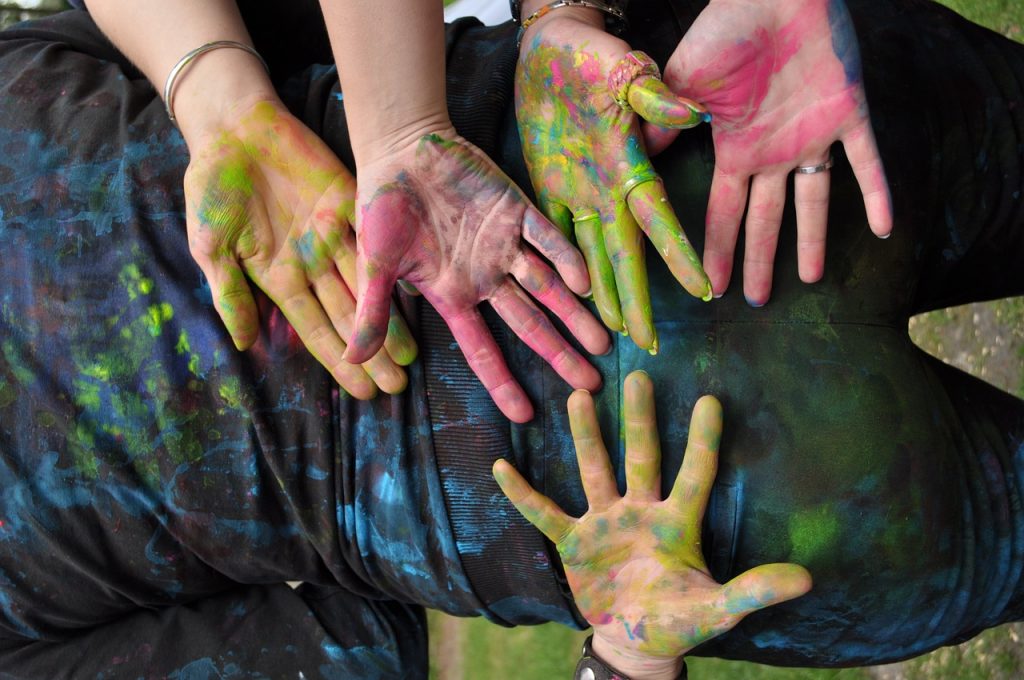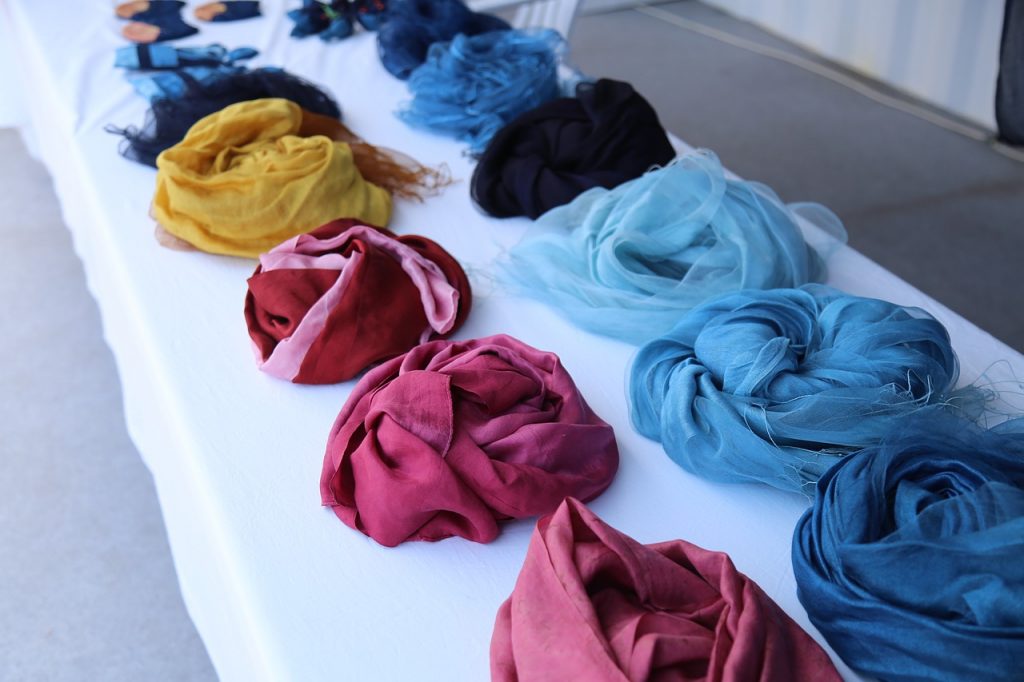Have you ever heard of the six-month rule? It says that if you haven’t used a piece of clothing for at least six months, you should consider throwing it out. But what if it’s not even torn or damaged, and it’s a shame to throw away? Well then, it’s the perfect chance for some fashion DIY. Believe it or not, items from your condo garden and pantry can actually help breathe new life into your wardrobe.
Most people don’t know that it’s possible to extract natural dyes from common items, and you don’t even need to be at the level of Martha Stewart. All you need is some time, a little effort, and basic household tools and materials.
How Dyeing Can Be a Lifesaver

Photo courtesy of stokpic via Pixabay
Now you may already be wondering whether the project would actually be worth doing. Well, think about all the benefits. If you don’t buy new clothes, you can save valuable condo space, as well as hundreds or thousands of pesos that you’d typically spend on a new wardrobe. And considering all the unethical practices associated with fast fashion, which have severe effects on human rights and the environment, you probably don’t want to spend too much money supporting the industry. By using natural dyes, you save space, save money, and help save the planet. What’s not to love?
Solo Project or Team Effort?

Photo courtesy of jolandabloem via Pixabay
Condo living in the Philippines isn’t just for young adults on their own; it’s also for new couples and families. So this natural dye project could be a solo effort or a good chance for two or more people to bond. If you have kids who’d like to join in the fun, consider getting protective eyewear for them as well, and make sure they know how to be careful around hot areas and sharp objects; though of course, they should be supervised during the process.
Prep Your Equipment

Photo courtesy of howliekat via Pixabay
Before you start, gather some basic necessities. For the dye preparation, you need gloves, an apron, kitchen knives (in case you have to chop anything), clean water, lots of pots and pans, a strainer, and a working stove. You’ll also need different ingredients depending on the color of dye you want to use. To keep the work area clean, consider laying down plastic sheets to catch any spills that might stain your floor or carpets.
For the fabric-dyeing process, gather some large containers (large enough to accommodate the clothes you want to dye), a strainer, water, tongs, rubber bands, salt, and vinegar; squirt bottles and chalk may also be necessary for more intricate patterns.
The Fabric Factors to Consider

Photo courtesy of Qiuyang via Pixabay
Not all fabrics work equally well with natural dyes. The best materials to work with are muslin, silk, cotton, and wool. White or light-colored fabrics are also best so that the colors can really show.
Experiment with different ways of twisting, folding, and tying to get different results. If you want to create a target pattern, first determine where you want the center point to be, then pinch the fabric at that point; lift it up, keeping the point at the top, then fasten rubber bands down the length of the fabric in one- to two-inch intervals. Each rubber band corresponds to a circle, so you can stop when you’re satisfied with the number of circles you’ve prepared. If you want diagonal stripes, fold the fabric diagonally like an accordion every one to two inches, then secure it with rubber bands.
You can also try drawing on the clothes with chalk; the chalk outline you draw should show up as either white or lighter-colored compared to the rest of the fabric after soaking.
Colors from the Kitchen

Photo courtesy of lauryann via Pixabay
Here’s the part where you get to feel like a mad scientist: preparing the dyes. Knowing how to create natural dyes from spices, fruits, and vegetables can open up countless fashion possibilities.
For shades of blue or violet, you need blueberries or blackberries. For purple or red, go for raspberries, beets or red cabbage. Avocado skins and seeds are good for light pink hues, while coffee grounds and tea bags will give you brown shades. Get green shades from sage or spinach; turmeric powder is useful for yellow. Generally, you’ll want to chop up the ingredient you’re using, and use two cups water for every one cup of ingredient; in the case of turmeric, use 1 to 2 tablespoons of spice for every 3 to 4 cups of water. Place each mixture in a separate pot and let them simmer for one hour. Once done, strain the mixture into a container or jar big enough to fit the fabric you want to soak.
If you have a garden of fruits and vegetables in your condo, you might find the ones you need there. You might even have them already in your kitchen, along with spices that are needed for certain colors. If you don’t have these, no worries: one of the main benefits of condo living is easy access to commercial areas like malls or supermarkets.
No “Fun Runs” in Fashion

Photo courtesy of 84264 via Pixabay
The dyeing process will involve several rounds of rinsing. Unless you treat the fabrics with a mordant or fixative, the dyes will just run and you won’t get the result you want. If you’re planning to use a fruit-based dye, put your fabric in ¼ cup of salt diluted in 4 cups of water. For vegetable- or plant-based dyes, use one cup of vinegar and 4 cups of water. Of course, you have to scale the mixtures up or down, depending on the number of pots you use, which depends on the number and size of clothes you’re using. Leave them boiling for one hour, and then rinse the articles of clothing in cold water. At that point, you can go to the next step.
Transforming Your Threads

Photo courtesy of domeckopol via Pixabay
Finally, you’re at the magic moment — time to soak the clothes. You can soak more than one item per container, but make sure they’re all adequately submerged. A good target would be to have two inches of dye covering the tied up and scrunched up fabrics. Leave them for at least one hour, but for best results, it would be best to leave them overnight. At the end of the soak, rinse each item with clean water, repeating until you see no more color residue running from the item you’re rinsing. Let each item air dry separately before you start ironing them. With these new threads, you’ll be ready to take your condo living summer style game to another level.
A quick note: when washing a dyed piece of clothing for the first time, don’t mix it with other clothes in the laundry; it’s best to wash it on its own to make sure there’s no residual dye that can stain your other clothes. You likely need to do this just once, but you can repeat it until you’re totally confident that your other laundry will be safe.
50 (or More) Shades of Summer

Photo courtesy of jekar1588 via Pixabay
Condo tenants have to share the common areas. In summer, it can get very hot and humid, so when residents go out to wander along the garden paths or take a dip at the pool, for example, they need comfortable clothes that they won’t be embarrassed to be seen wearing. If you relate to this, then one ideal solution is to wear your newly-colored old threads.
Serious fashionistas will want to recolor their wardrobe based on the latest color trends this year. Others who may not be so choosy have plenty of timeless summer colors to choose from, like bright yellows, vibrant reds or muted browns. Those who are even more adventurous can mix and match different colors by pairing two articles of clothing with colors that work well together. Those with the time and energy to do so can soak one article of clothing in one color dye first, then soak it in another afterwards.
For those who are living in a condo, the struggle to save money and space is all too real. So why not deal with it in an awesome, creative way? By putting a new, natural-dye twist on your old clothes, you can effectively address those problems, and you get to express your style in a way that’s truly yours.


